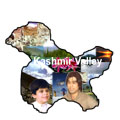 |
Kargil District Kargil
district carved out of erstwhile district Ladakh came into existence
in July 1979.It lies in the North-east Of Kashmir Valley at
a distance of 205 Kms. from Srinagar with a geographical area
of 14,036 Sq.Kms. The whole area is of high rocky mounatins
which is devoid of any natural vegetation. The population of
the district is above one lakh having density of 7 persons per
Sq.Kms. against the average of 59 persons per Sq.Kms.at State
level.99% of population is schedule tribe. The district has
high altitude area in the Country ranging from 8,000 fts.to
18,000 fts.above sea level. There are 7 rural development blocks
comprising of 129 villages and 461 habitations as per 1981 Census
which comprise a number of households settled near available
irrigation facilities.District has two tehsils and on Sub-division
at Zanskar.The district remains cut off from the rest of country
from November to May in view of heavy snow fall on National
Highway at Zojila pass.People mostly live in rural areas and
only 5.3 percent reside in the town. The majority of population
is Muslim.The Budhists come next with their concerntration in
Zanskar tehsil and Shargol block.A few families of Sikhs and
Hindus also live in the district.The cultivated area in the
district is 10,000 hectares as against 19,437 hectares of reporting
area.The soil is generally coarse, mixed with stones and gravels.
It is alkine in reaction and organic matter content is very
low.The fertility of the soil varies from place to place and
the growing season is short.The avearge rainfall in Kargil is
26 cms only. The district gets snowfall varying from 2ft.to
5ft.The Kargil town,Suru Valley and the villages around the
Wakha and Kanji Nallah record a snowfall upto 3ft while in Drass
and some parts of Zanskar it is 5ft.Drass is the second coldest
inhabited place in the world after Siberia in Russia.The areas
of Karkitcho,Kargil town,Hardass to Saliskot and the villages
from Silmo to Garkone get a double crop of barley, wheat,peas,bajrah
and vegetables while other areas of the district get only single
crop of wheat,barley,peas and some varieties of vegetables.
The barley is the staple crop of the district. The district
presents a composite culture of Balti, Ladakhi, Purki, Dardi,Zanskari
and Shia cultures. Irrespective of ethenic identities,all speak
the Kargali.
|
